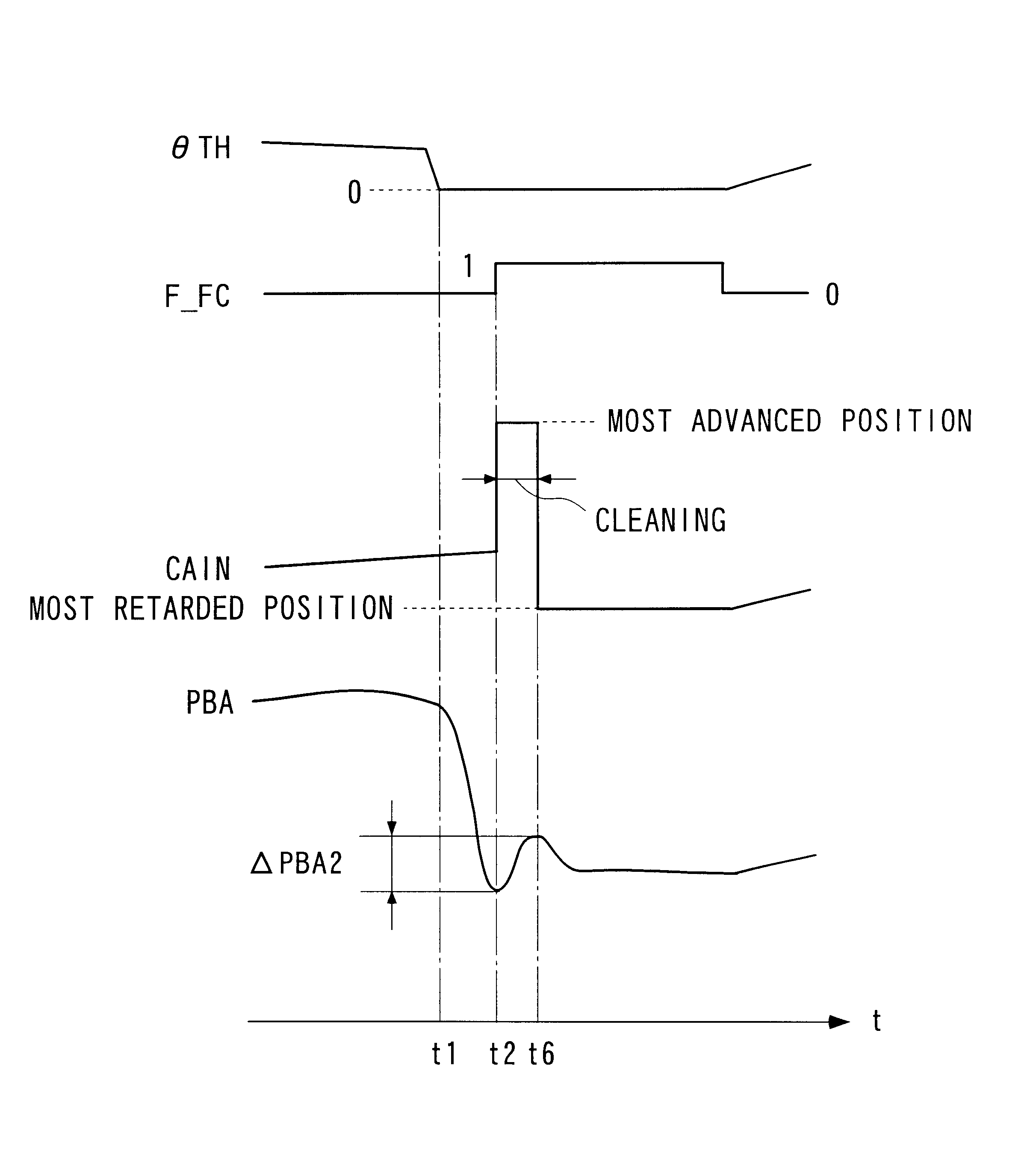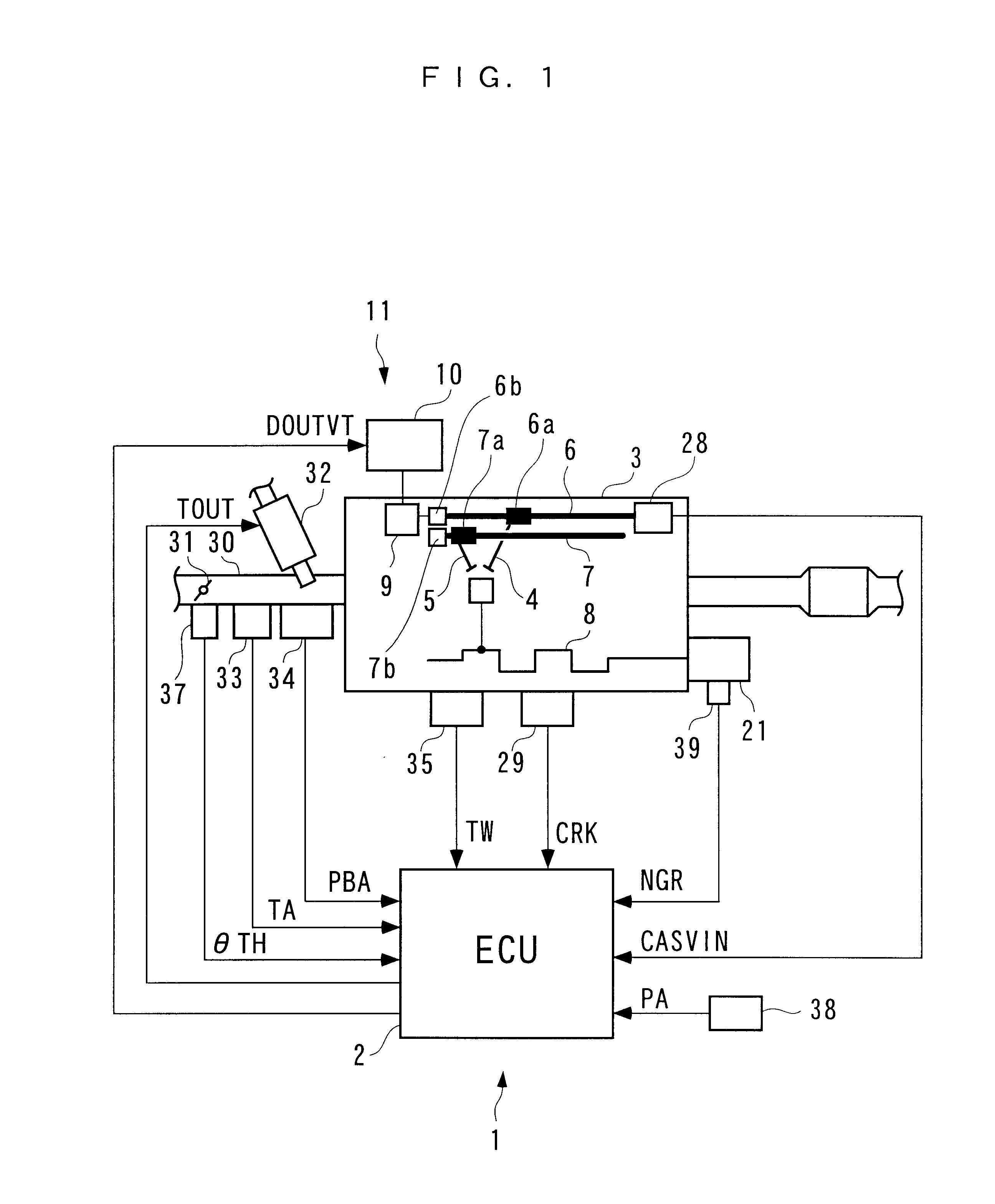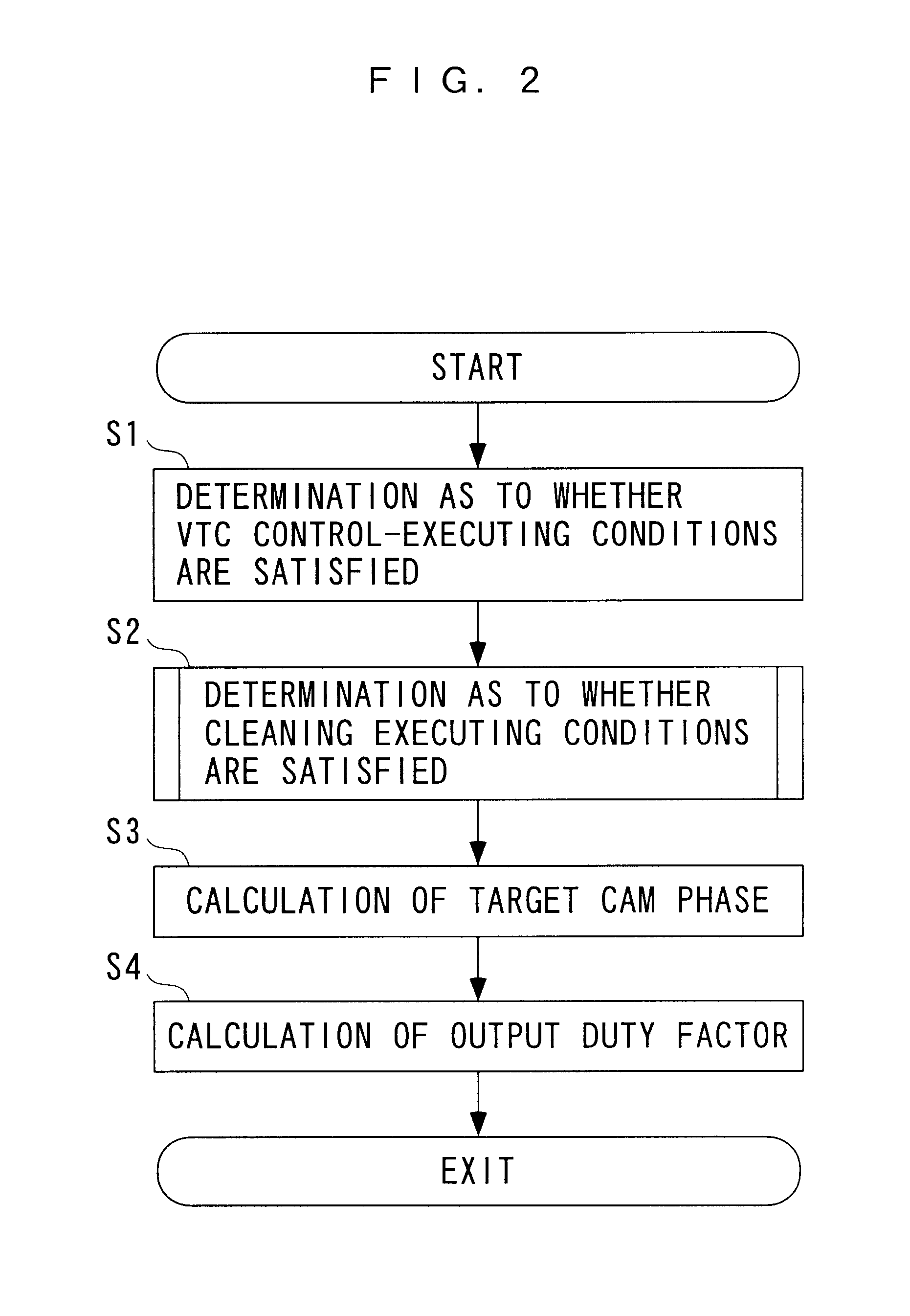Valve timing control system for internal combustion engine
a timing control system and internal combustion engine technology, applied in the direction of electric control, machines/engines, output power, etc., can solve problems such as affecting drivability
- Summary
- Abstract
- Description
- Claims
- Application Information
AI Technical Summary
Benefits of technology
Problems solved by technology
Method used
Image
Examples
Embodiment Construction
The invention will now be described in detail with reference to the drawings showing a preferred embodiment thereof.
Referring first to FIG. 1, there is schematically shown the arrangement of an internal combustion engine incorporating a valve timing control system (hereinafter simply referred to as "the control system") according to an embodiment of the invention. As shown in the figure, the control system 1 includes an ECU 2. In the present embodiment, the ECU 2 forms or implements deceleration fuel cut-off operation-determining means, cleaning control means, and delay time-setting means, and carries out control processes, described hereinbelow, in dependence on operating conditions of the internal combustion engine (hereinafter simply referred to as "the engine") 3.
The engine 3 is e.g. a four-stroke cycle DOHC (double overhead camshaft) gasoline engine, installed on a vehicle, not shown. The engine 3 has a crankshaft 8 thereof connected to drive wheels (not shown) of the vehicle e...
PUM
 Login to View More
Login to View More Abstract
Description
Claims
Application Information
 Login to View More
Login to View More - R&D
- Intellectual Property
- Life Sciences
- Materials
- Tech Scout
- Unparalleled Data Quality
- Higher Quality Content
- 60% Fewer Hallucinations
Browse by: Latest US Patents, China's latest patents, Technical Efficacy Thesaurus, Application Domain, Technology Topic, Popular Technical Reports.
© 2025 PatSnap. All rights reserved.Legal|Privacy policy|Modern Slavery Act Transparency Statement|Sitemap|About US| Contact US: help@patsnap.com



